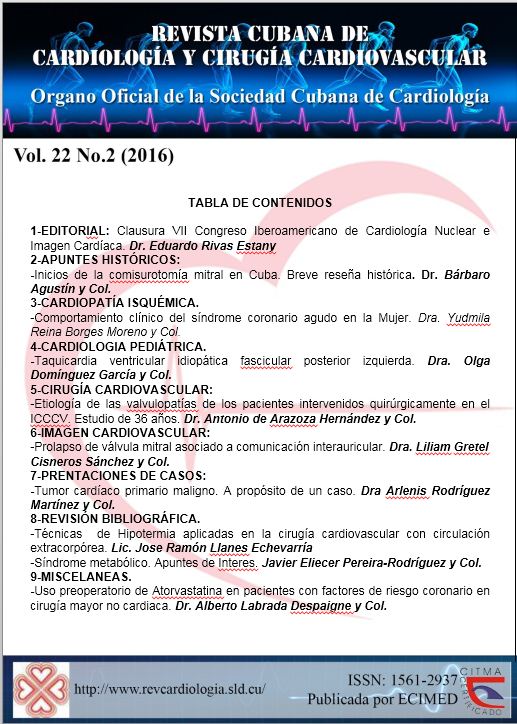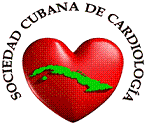Prolapso de válvula mitral asociado a comunicación interauricular
Palabras clave:
Prolapso valvular mitral, Comunicación InterauricularResumen
Compartimos las interesantes imágenes de una asociación de alteraciones congénitas poco frecuente en nuestro medio:
Paciente femenina de 43 años de edad con antecedentes de ser fumadora y de prolapso valvular mitral (PVM).
Al realizarse el ecocardiograma se observó en modo bidimensional dilatación moderada del ventrículo izquierdo (VI) y de ambas aurículas, engrosamiento de ambas valvas mitrales, valva mitral posterior redundante con prolapso severo de sus segmentos P2 y P3, tabique interauricular (TIA) rechazado hacia la aurícula derecha (AD) con ausencia de ecogenicidad en su porción media y posterior que midió 16 mm. Con el Doppler color se observó turbulencia sistólica en aurícula izquierda (AI) que llegaba al techo de la misma, dirigida hacia el TIA, con efecto Coanda, dicha turbulencia atravesaba al TIA, observándose un shunt de izquierda a derecha. Se concluyó el estudio con el diagnóstico de insuficiencia valvular mitral severa por prolapso severo de valva mitral posterior y presencia de comunicación interauricular (CIA) tipo osteum secundum.
Descargas
Publicado
Cómo citar
Número
Sección
Licencia
Aquellos autores/as que tengan publicaciones con esta revista, aceptan los términos siguientes:- Los autores/as conservarán sus derechos de autor y garantizarán a la revista el derecho de primera publicación de su obra, el cuál estará simultáneamente sujeto a la Attribution-NonCommercial 4.0 Internacional (CC BY-NC 4.0) que permite a terceros compartir la obra siempre que se indique su autor y su primera publicación esta revista. o admite fines comerciales. Permite copiar, distribuir e incluir el artículo en un trabajo colectivo (por ejemplo, una antología), siempre y cuando no exista una finalidad comercial, no se altere ni modifique el artículo y se cite apropiadamente el trabajo original. El Comité Editorial se reserva el derecho de introducir modificaciones de estilo y/o acotar los textos que lo precisen, comprometiéndose a respectar el contenido original.
- Los autores/as podrán adoptar otros acuerdos de licencia no exclusiva de distribución de la versión de la obra publicada (p. ej.: depositarla en un archivo telemático institucional o publicarla en un volumen monográfico) siempre que se indique la publicación inicial en esta revista.
- Se permite y recomienda a los autores/as difundir su obra a través de Internet (p. ej.: en archivos telemáticos institucionales o en su página web) antes y durante el proceso de envío, lo cual puede producir intercambios interesantes y aumentar las citas de la obra publicada. (Véase El efecto del acceso abierto).









